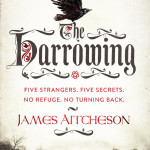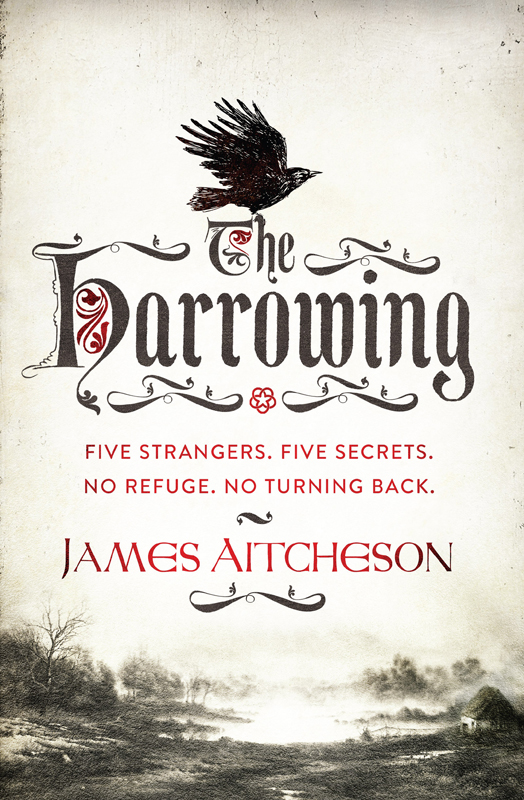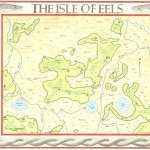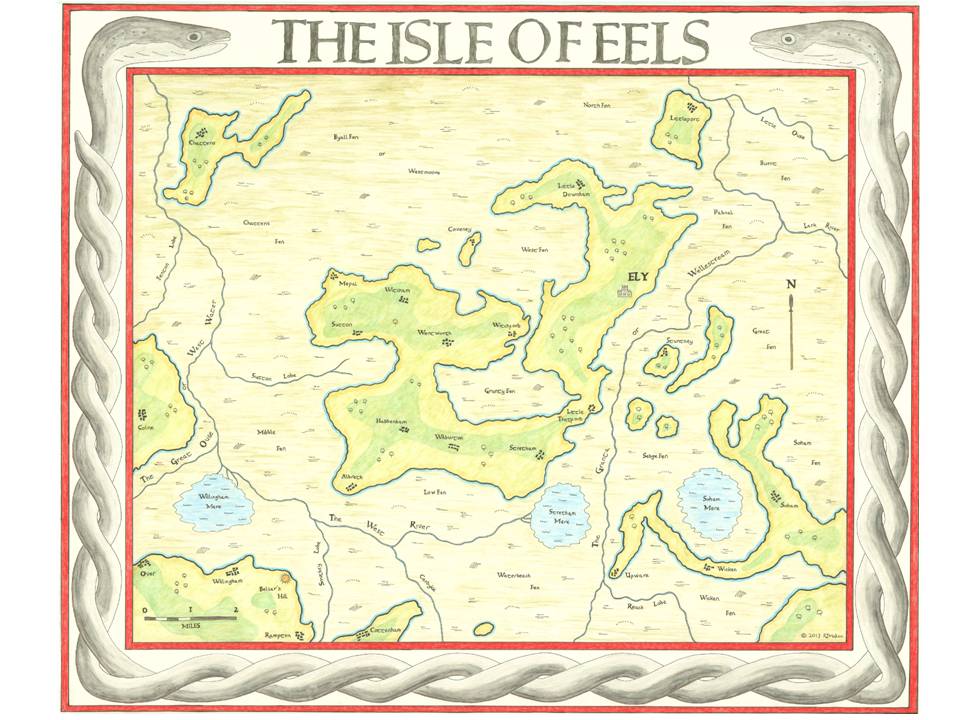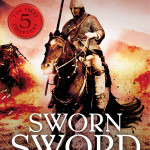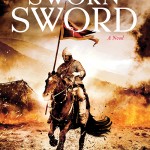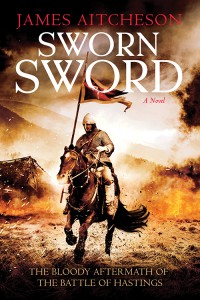Regular visitors to this website can’t fail to have noticed the very large and eye-catching announcement on the home page – my long-awaited fourth novel, The Harrowing, is due to be published on 7 July!
It’ll be available in hardcover and as an ebook, courtesy of my wonderful new publisher Heron Books, an imprint of Quercus Publishing.
Originally conceived as “The Canterbury Tales meets Cormac McCarthy’s The Road“, the novel has been almost three years in the making, but I feel – and I hope you’ll agree when you come to read it – that it’s been worth every moment spent working on it.
Set amidst the turmoil of the Norman Conquest during a particularly brutal episode known as the Harrying of the North, The Harrowing centres upon five English refugees fleeing the devastation who are forced to band together for survival.
You can find the full synopsis here. I’m currently in the process of arranging my book tour for the summer, so keep checking the Events page to see when I’ll be visiting a bookshop, library or literature festival near you!
“The sword-path is never a straight road, but rather ever-changing, encompassing many twists and turns. All a man can do is follow it and see where it leads.”
In a little less than a month’s time, Knights of the Hawk, the third instalment in my Conquest Series featuring the knight Tancred, will be released in the United States in hardcover.
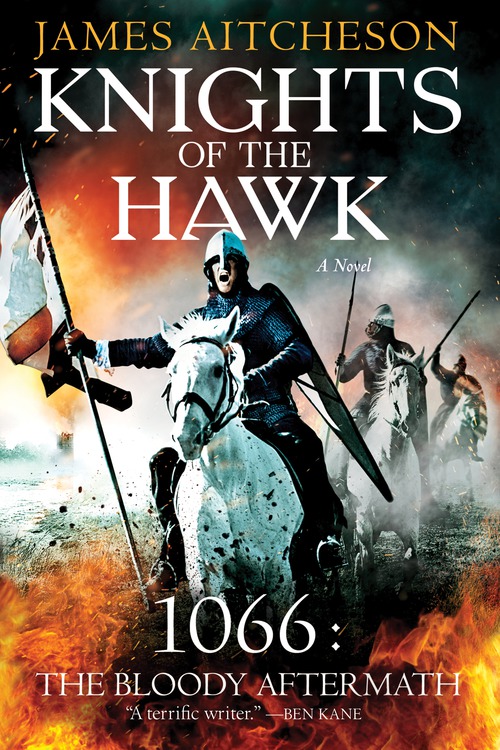
Knights of the Hawk • James Aitcheson
Sourcebooks Landmark • 416 pp. • Hardcover • $24.99
Like the previous two volumes in the series, the book will be published by the excellent team at Sourcebooks Landmark, with whom I’ve had the immense pleasure of working over the last three years, and will be available from all good bookstores and online retailers from August 4th.
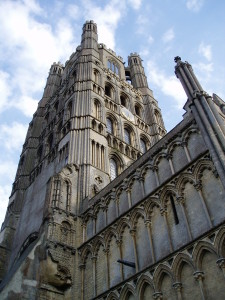
The cathedral at Ely, built on the site of the Anglo-Saxon monastery which Hereward and his fellow rebels established as their base in the fight against the Normans.
The novel begins during the siege of the Isle of Ely, where the infamous English outlaw Hereward the Wake has gathered a band of rebels to make one final, last-ditch stand against the Normans.
As King William’s attempts to assault the rebels’ island stronghold end in disaster, however, the campaign begins to stall. With morale in camp failing, the king turns to Tancred to deliver the victory that will crush the rebels once and for all and bring England firmly within his grasp. But events are conspiring against Tancred, and soon he stands to lose everything he has fought so hard to gain.
“It is in those final hours, when the prospect of battle has become real and the time for hard spearwork is suddenly close at hand, that a man feels most alone, and when doubt and dread begin to creep into his thoughts. No matter how many foes he has laid low, or how long he has trodden the sword-path, he begins to question whether he is good enough, or whether, in fact, his time has come.”
Also, keep a look out for the U.S. paperback edition of The Splintered Kingdom, which will be published by Sourcebooks Landmark in November. I’ll be posting more information about that in the coming months.
This week I’m pleased to be interviewing author and artist Rus Madon, the creator of the Isle of Eels map (below). The map reconstructs the historical geography of the Fens around Ely as they would have appeared at the time of the Norman Conquest: specifically in 1071, when Hereward the Wake and other rebels used the Isle as a base from which to conduct their guerilla war against the invaders.
Rus recently sent me a copy of his meticulously researched map, a remarkable piece of work and a wonderful resource for anyone fascinated, as I am, by the Fens and the role that they played in the years that followed 1066.
His work was also featured recently on the British Library’s blog. You can find him on Twitter at @RusMadon.
*
What was the initial inspiration for researching and creating the map, and how long did it take you to complete?
I am writing a Young Adult story about a girl who lives in modern-day Ely. She travels back in time to the year 1071 when Ely was defended against the Normans by Hereward the Wake. The more I wrote about 11th-century Ely, the more I wondered what it actually looked like. I knew that Ely had been an island, and I was having difficulty tracking where my characters were in relation to the original fens. So to help answer the question, I set about drawing a map of medieval Ely.
Including doing all the research, it took 200 hours to complete the map over an 8 month period in 2013. The original map is 1m x 1.2m and I had to make a workspace in the loft for all the materials, as it was too big to work on in the house!
Was this the first time you’d tackled a project like this?
The proper answer is yes. I do not have an artistic bone in my body, and made several attempts before ending up with the version you see. The eels in the border were particularly challenging (or should I say slippery!).
 However, when I was a teenager in the mid 1970s, I spent an entire summer holiday recreating the map of Middle Earth from The Lord of the Rings. By coincidence, that is also 1m x 1.2m, and was drawn on a big piece of butcher’s paper! It hangs on the wall next to my map of Ely.
However, when I was a teenager in the mid 1970s, I spent an entire summer holiday recreating the map of Middle Earth from The Lord of the Rings. By coincidence, that is also 1m x 1.2m, and was drawn on a big piece of butcher’s paper! It hangs on the wall next to my map of Ely.
The Romans were the first to try to drain the Fens. How much evidence of their activities can still be seen in the landscape today?
Well, the Romans were first and foremost engineers, and they managed to tame many environments across Europe. But the might of Rome met her match with the fens! The landscape of the fens was too wild and impenetrable for the Romans to have any real success in their attempts to drain them.
However, the Romans did build several causeways to make travel easier, the most famous of which was the Fen Causeway, or Fen Road. This linked Denver, near Downham Market, to Peterborough, but it essentially was a road at the northern edge of the fens, which at that time would have been a coast road, as the modern coastline is many miles further north than it was in Roman times. Another causeway linked Cambridge with Ely, some of which is now part of the A10 trunk road and can be seen near Denny Abbey.
They also excavated the Cardyke (visible on my map). This canal system linked the Granta (now the Cam) to the West River and allowed movement of goods and people through the river system of the fens.
Since the marshes were drained in the seventeenth century it has obviously changed a great deal. How difficult was it to rediscover the medieval Fens?
It was harder than I expected. At first I simply tried searching online for a copy of how the fens would have looked, and that would have been sufficient for what I needed. But there were no definitive sources I could find. I also became aware that researchers had published material, but the information was not easily accessible.
What became apparent was that my task had two elements to it. The first was to try and understand how the land would have looked. This was relatively straightforward, as whilst the level of the water table has dropped since the fens were drained, the geology that created the “islands” has not changed at all (in other words, there has been no undue erosion of the landmass).
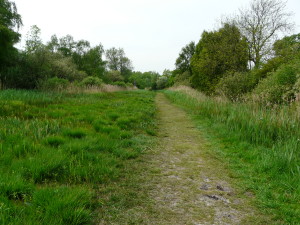 By far the most difficult part of the research was to try and understand how the waterways would have looked, and how they linked together. The river systems that people living in Ely today will recognise is very different to that of a thousand years ago. Today, the Ouse runs west to east and joins the Cam before heading North past Ely. The Cam (Granta) has not changed much since those times, but it came to light that the West River flowed east to west and joined the Great Ouse to head north to the left of Ely! This was a very different system to that seen today. The courses of the Ouse changed principally because of the two huge artificial drainage ditches that were constructed to the northwest of Ely (the Bedford Rivers), commissioned by the 4th Earl of Bedford in 1630 to help in the process of draining the fens.
By far the most difficult part of the research was to try and understand how the waterways would have looked, and how they linked together. The river systems that people living in Ely today will recognise is very different to that of a thousand years ago. Today, the Ouse runs west to east and joins the Cam before heading North past Ely. The Cam (Granta) has not changed much since those times, but it came to light that the West River flowed east to west and joined the Great Ouse to head north to the left of Ely! This was a very different system to that seen today. The courses of the Ouse changed principally because of the two huge artificial drainage ditches that were constructed to the northwest of Ely (the Bedford Rivers), commissioned by the 4th Earl of Bedford in 1630 to help in the process of draining the fens.
What sources did you use to delve into this lost landscape?
I used the resources of the British Library to look for the oldest maps of the area prior to the Dutch draining the fens in the 17th century. All maps of the area are thought to derive from a survey of the area carried out by William Hayward at the beginning of the 17th century. This map was destroyed in a fire, but it is believed that Sir Robert Cotton, a keen collector of fenland maps, had a copy made (The Cotton Map). It is an extraordinary document. Looking at the hand drawn map, you can see the lost Isle of Eels emerging from the fens, as if I was looking back in time.
I supplemented this information with a review of existing Ordnance Survey maps, using the 5-metre contour line to sketch out land that would have been above the ancient water table. In the British Library I came across a pivotal paper published by Major Gordon Fowler in 1934. This paper outlined the possible ancient watercourses of the area. Along with several other authors and notably the excellent Henry Darby, I pieced together how the rivers would have flowed around the island in Saxon times.
The final step was to add the main settlements that would have existed in 1071. For this I used a mixture of references from Domesday Book and the Liber Eliensis, the so-called Book of Ely, written in the 12th century by monks at Ely Abbey.
[NOTE: A full list of references can be found at the end of Rus’s article on the British Library’s blog.]
How much fieldwork did you have to do and what did that involve? How useful was it to be on the ground?
During the summer of 2013 I drove the back roads and lanes that criss-cross the island, making adjustments to my notes, extending the sweep of a hill, noting natural hollows in the ground, and removing the causeways and embankments that had been added much later. Without doubt, being on the ground helped add context to the map.
But for me, on a personal level, it was more than a matter of accuracy. Seeing the landscape allowed me to connect with the map, it helped guide my hand when I was back in my draughty cold loft, transcribing the information; it made the map live for me.
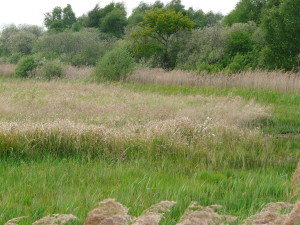 Were there any particularly unusual or surprising nuggets of information that you turned up in the course of your research?
Were there any particularly unusual or surprising nuggets of information that you turned up in the course of your research?
My discovery that the modern day Ouse had a completely different route and was not joined to the Cam surprised me. But to some extent, that was a matter of historical record, I simply needed the time to find the information.
However, some of the old books I read in the British Library gave vivid accounts of the fens in medieval times. The people were a breed apart; tough, independent, wary of outsiders. They wore eel skins to ward off illness and bad spirits. They would fight fiercely to defend their homes. The fens themselves were thriving with life, with bitterns, swans and eels. I read of Flag Iris, a beautiful carpet of flowers with a fragrant scent; but if a man stood on it, he would be sucked deep into the waters below. There was one account of a pod of whales that swam into the Granta from the sea. They became stuck in a small tributary and died. For many decades their skeletons were a reminder of the dangers of the fens.
So what did I do with all these nuggets? I am a writer, so I weaved them into my story, to bring it alive, to make it real.
How do you plan to use the map now that it’s finished?
Now that the map is complete (a copy of which I donated to the British Library), I can travel back in time to 1071 and see the Isle of Eels through the eyes of my characters. It has allowed me to be more credible when describing their adventures.
It is also my intention for the map to be part of the book, so that the readers can also see what Ely would have looked like in the eleventh century. Maybe one day, if my book is a success, the map will become as famous as the one of Middle Earth…
On this week’s edition of In Our Time, the long-running BBC Radio 4 series, the topic under discussion was Domesday Book. One of the most significant documents in English history, it is unparalleled in form and scope, and one of the greatest legacies of the Norman Conquest.
Commissioned by William the Conqueror in 1085, it is, in essence, a kingdom-wide record of who held what estates and other assets in England and how much they were all worth. The level of detail sought by the men carrying out the inquest was remarkable, even if not all of it necessarily made it into the final, edited version. As one of our key sources for the period, the Anglo-Saxon Chronicle, comments in its entry describing the Domesday Survey:
“…there was not one single hide, not one yard of land, not even (it is shameful to tell – but it seemed no shame for him to do it) one ox, not one cow, not one pig was left out, that was not set down in his [King William’s] record.”
Joining Melvyn Bragg to discuss Domesday Book, the circumstances of its creation, the processes of the survey that supplied the information, its contents and its lasting impact, were three eminent scholars of the Norman Conquest: Elisabeth van Houts, David Bates and Stephen Baxter. It’s a fascinating debate; even after 900 years there remain several unanswered questions as to how it was put together and the exact reason for its being commissioned.
If you missed it, you can catch up online or else download the discussion as a podcast to listen to later from the BBC website. The In Our Time archive includes many excellent programmes related to Anglo-Saxon England and the Norman Conquest, and indeed history in general. In time I plan to compile a list of the best ones and post the links here on the website for anyone who’s interested in finding out more.
For the moment, however, here are two of my favourite programmes from the archives: firstly, Alfred and the Battle of Edington, about the West Saxon king’s struggles against the Viking invaders; and secondly, if you’re looking for further insight into life in England post-1066, The Norman Yoke, exploring and questioning the idea that the Conquest was necessarily a Bad Thing that resulted in many years of harsh oppression for the Anglo-Saxons.
If you’re interested in looking deeper into Domesday Book, meanwhile, or in exploring the history of your own home town or village, you need go no further than the Open Domesday project. Combining map data with records from the survey, it’s a visual, searchable database of who held what property in England, both on the eve of the Conquest in 1066 and at the time of the survey two decades later. It’s free to access, and easy to use.
And of course I can’t talk about Domesday Book and go without mentioning my own grand historical survey of the kingdom of England c.1066, Tancred’s England. With just three location entries so far, it’s not quite on the scale of that eleventh-century masterwork, which records 13,418 places and contains over 2 million words, but I’ll be adding to it bit by bit over the coming months. Any comments, including suggestions for other places that I could feature in Tancred’s England, are welcome – just let me know via the Contact page.
Tell your friends! Today, the brand new paperback edition of Sworn Sword will be hitting bookshelves across the United States. Featuring an updated, more vibrant cover design (similar to the UK paperback cover; see below right), it also contains a short excerpt from the sequel, The Splintered Kingdom, which is due to be published this August and of which I’ll be posting more details here in the next few months.
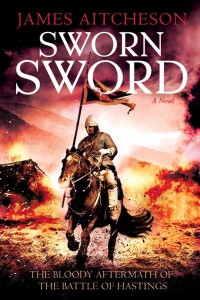
Sworn Sword • James Aitcheson • Sourcebooks Landmark • 400 pp.
Trade paperback • $14.99
I’m pleased to say, as well, that Sworn Sword has been picking up excellent reviews since its hardback publication last summer, including one in Publishers Weekly and another recently in the Philadelphia Inquirer. Thanks to all those of you who have kindly taken the time to email me through the Contact page or sent messages on Twitter and Facebook to say how much you’ve enjoyed the book and are looking forward to Tancred’s further adventures. He and his brothers-in-arms will ride again in the not-too-distant future!
If you already own the hardcover edition of Sworn Sword and can’t wait until August to find out where Tancred’s travels will be taking him in The Splintered Kingdom, you can find the synopsis as well as the first chapter, which is available to download for free, here.
The Normans are coming! Not content with conquering England, they now have their sights set on the USA as well…
And their campaign begins today with the Stateside release of Sworn Sword in both hardcover and eBook editions, courtesy of the hard-working people at my publisher Sourcebooks Landmark, who have done an absolutely fantastic job of making the book a reality.
As readers in the UK already know well, Sworn Sword is the first instalment in the Conquest Series, which tells the story of the violent and treacherous years immediately following the Norman invasion of England in 1066, when rebellion gripped the kingdom and its fate hung in the balance. As will become clear, the fateful Battle of Hastings was not the end of the struggle for England; in fact, it was just the beginning.
Based on real-life events, the series follows the career of the ambitious young knight Tancred, who is hungry for battle, for glory and for vengeance after his lord is murdered by English rebels. To find out more, have a look at the cover blurb and download the first chapter from Sworn Sword to whet your appetite.
The second in the series, The Splintered Kingdom, will be published in the US in summer 2014, followed by Knights of the Hawk in summer 2015, so there are plenty of Norman Conquest-related adventures to look forward to! As always, I’ll be posting the latest information about the novels as and when I have it, so keep checking back from time to time to see what’s new.
Featured podcast
For more podcasts, visit James's channel on Soundcloud.

